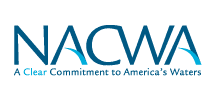Clean Water Advocacy - Newsroom - NACWA in the News
New York City Seeks Supreme Court Review Of Second Circuit Ruling on Water Transfers
New York City is seeking U.S. Supreme Court review of an appeals court judgment that held clean water permits are required for water transfers that occur through tunnels, channels, or natural streams for public water supplies (City of New York v. Catskill Mountains Chapter of Trout Unlimited, U.S., 11/20/06).
The city wants review of a U.S. Court of Appeals for the Second Circuit judgment that water transfers are subject to the National Pollutant Discharge Elimination System (NPDES) permitting program under Section 402 of the Clean Water Act (Catskill Mountains Chapter of Trout Unlimited Inc. v. New York City Department of Environmental Protection, 451 F.3d 77, 62 ERC 1737 (2d Cir. 2006);115 DEN A-2, 6/15/06 ).
The petition was filed Nov. 20.
In June, the Second Circuit affirmed a 2003 decision by the U.S. District Court
for the Northern District of New York that found transfers of sediment-laden
water from the city water supply's Shandaken Tunnel into Esopus Creek constitute
a discharge of pollutants requiring an NPDES permit.
The district court's ruling was issued in response to a remand ordered by the
Second Circuit in October 2001. The city's subsequent appeal of the district
court ruling resulted in the Second Circuit's ruling that requires regulation of
water transfers.
In the Nov. 20 petition, city officials said the Second Circuit's ruling
threatens design and operation of public water supply systems and is
"inconsistent with the language of the Clean Water Act and the federal
government's long standing position on water transfers."
The city said the Second Circuit ignored the notice of proposed rulemaking
released June 1 by the Environmental Protection Agency in response to the 2004
Supreme Court ruling involving the South Florida Management District and the
Miccosukee Tribe (South Florida Water Management District v. Miccosukee Tribe,
441 U.S. 95, 58 ERC 1001; 106 DEN A-7, 6/2/06 ).
In that case, the court said a pumping station used to transfer polluted water
from a South Florida canal into a water conservation area may require a Clean
Water Act permit, even though the pump does not actually add pollutants to the
water being conveyed.
However, the court stopped short of saying whether a permit was needed. Instead,
it remanded the case for a determination on whether two "meaningfully distinct"
water bodies were involved.
In the notice of proposed rulemaking, EPA said it intended to codify its
long-standing practice of exempting water transfers from permitting
requirements. In Miccosukee, it also noted that the Supreme Court did not
address the question of whether water transfers needed regulation, but instead
invited the agency to take a legal position on the matter.
NACWA to Support Petition
The National Association of Clean Water Agencies (NACWA) intends to file an
amicus brief in support of the city's petition "in the next few weeks," Susan
Bruninga, the group's public affairs director, told BNA Nov. 28.
NACWA, which represents mainly publicly owned wastewater utilities, has a stake
in this petition because some of its members, including New York City, also
operate drinking water plants. Bruninga said those members would be affected by
the appellate court's ruling, if it goes unchallenged.
"We do not believe that intra-basin transfers of natural untreated water qualify
as discharges of pollutants and, therefore, do not fall under the jurisdiction
of the Clean Water Act," Bruninga said.
In a statement to BNA Nov. 28, Diane VanDe Hei, executive director of the
Association of Metropolitan Water Agencies, reiterated the city's position that
the Second Circuit's opinion "conflicts with Congress' instruction that the
[Clean Water Act] is not intended to impair the authority of states to allocate
quantities of water" and is at odds with EPA's interpretation that the act does
not require NPDES permits for water transfers.
By Amena H. Saiyid



